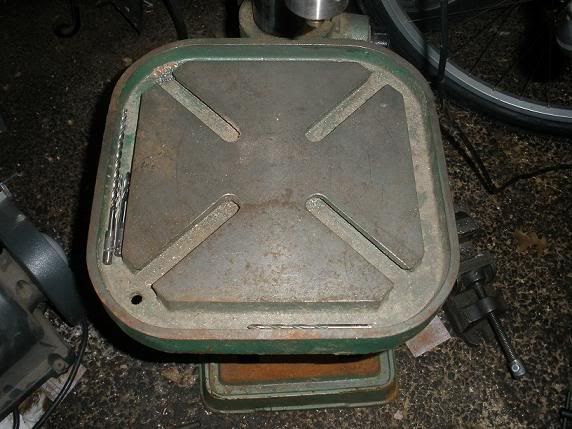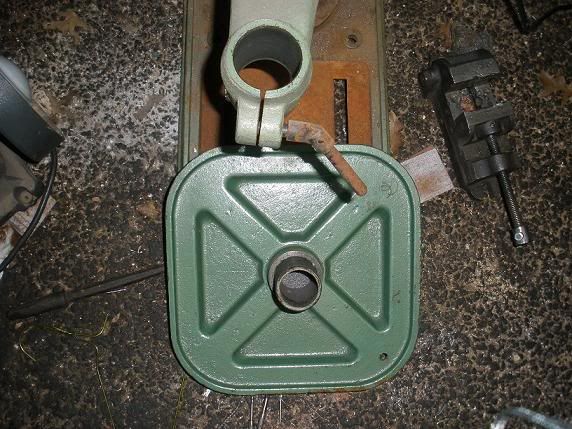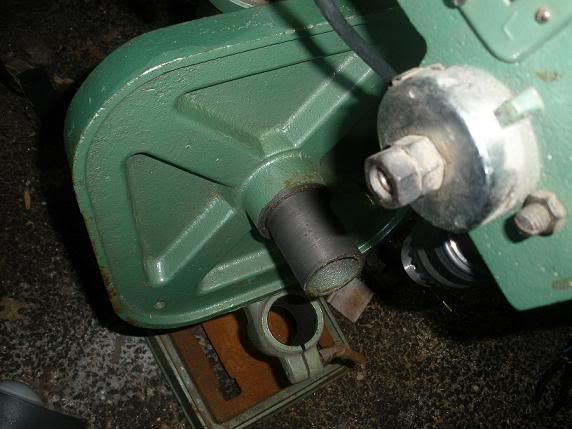Fletch Helical
Well-Known Member
So after seeing the holes I made in my first set of scales and say the Corby's line up I took for granted that I was squared up. Last night I took another pair of scales drilled them for a knife, everything turned out great.....Except one of the bolts doesn't sit perfectly straight. So I need to square up my table on my press. I spun a coat hanger around the table and can see where I'm low. My problem is: What's the best way/material to shim up the table to make it square?
My table has a piece of round stock that sticks off the bottom of it and goes into a round collar that I can tighten/loosen to spin the table around. So my guess is I need to build up various spots on that round collar would be the easiest route. As opposed to trying to work off the bottom of the table right?
So what is the best way to go about doing this?
Included are some pics of what I'm working with so you guys know
Here is the top of the table

Table removed to show the post on the bottom and the collar it sits in

And just another shot of the underside of the table and the collar

My table has a piece of round stock that sticks off the bottom of it and goes into a round collar that I can tighten/loosen to spin the table around. So my guess is I need to build up various spots on that round collar would be the easiest route. As opposed to trying to work off the bottom of the table right?
So what is the best way to go about doing this?
Included are some pics of what I'm working with so you guys know
Here is the top of the table

Table removed to show the post on the bottom and the collar it sits in

And just another shot of the underside of the table and the collar


